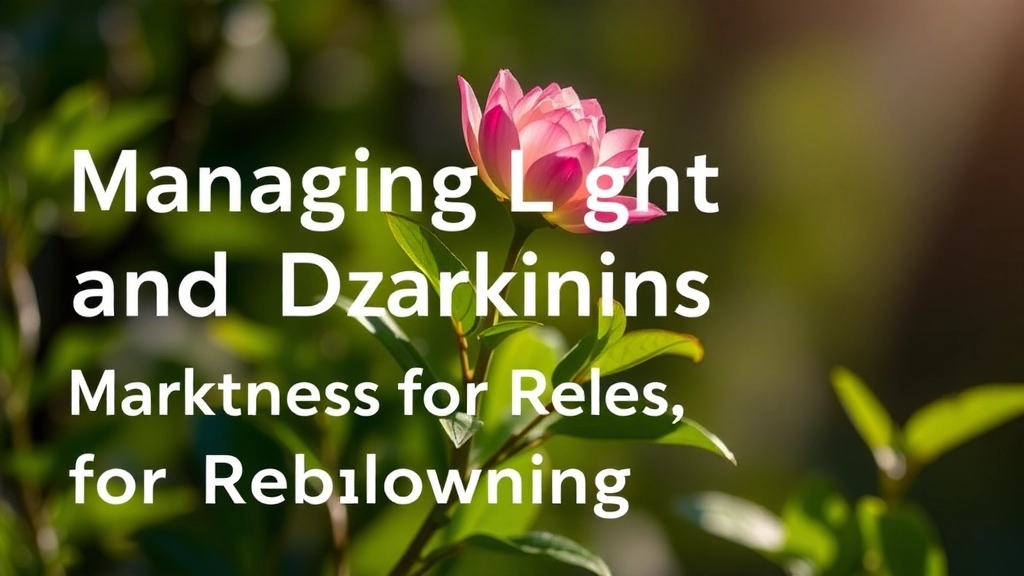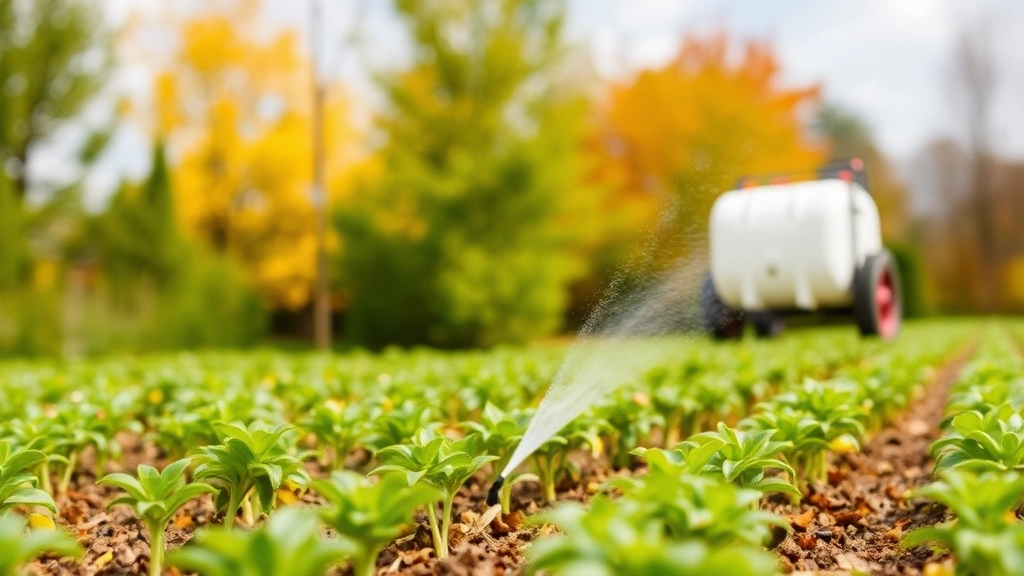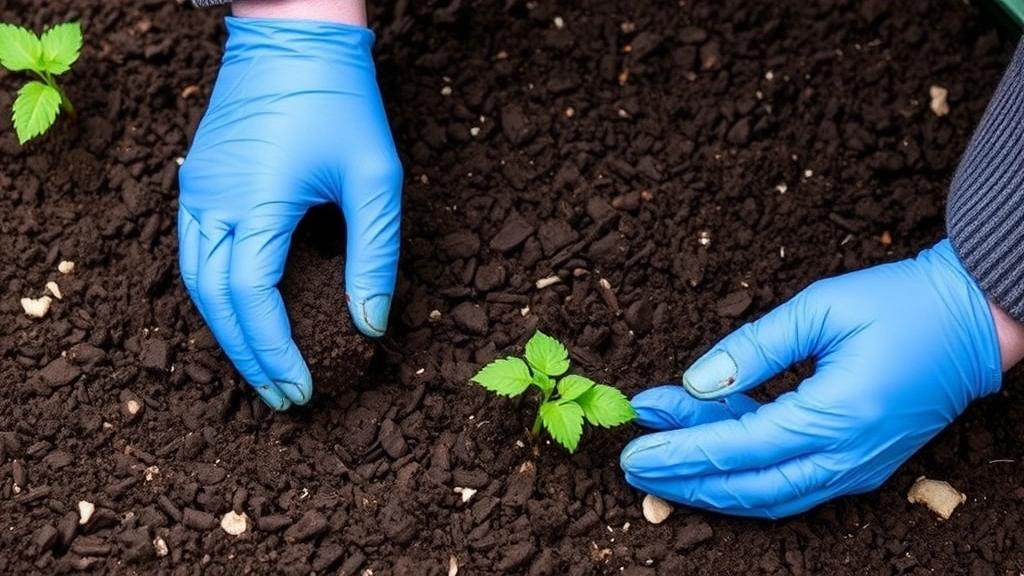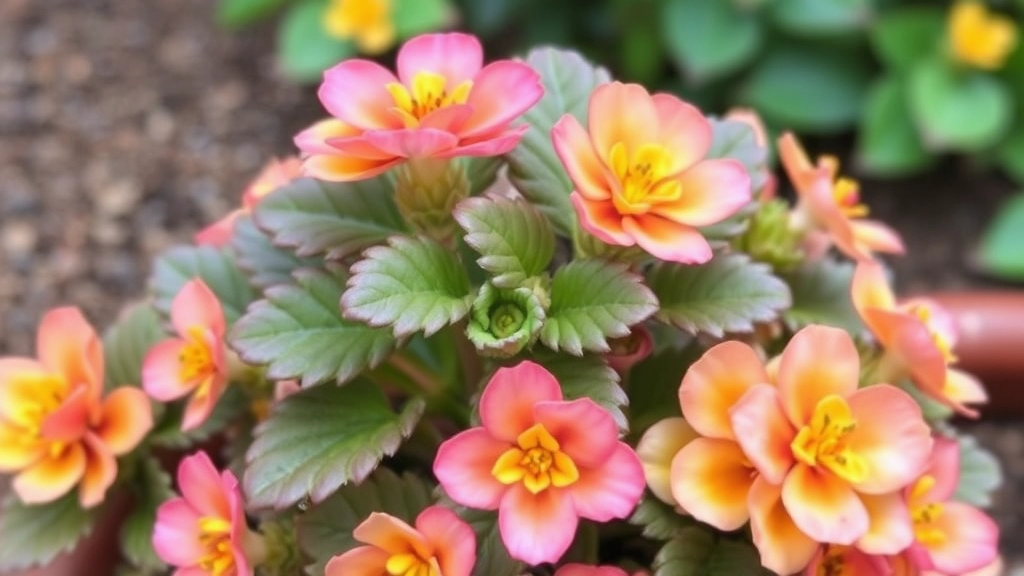Fall Kalanchoe Care
As the leaves change and temperatures drop, it’s time to adjust your Kalanchoe care routine. Fall Kalanchoe care is essential to keep your plant thriving and ready for winter blooming. Here’s how to ensure your Kalanchoe stays healthy during the cooler months.
Watering
Firstly, reduce watering as the plant’s growth slows. Kalanchoe prefers drier soil in fall, so let the top inch of soil dry out between waterings.
Light Exposure
Next, manage light exposure by providing bright, indirect sunlight during the day and ensuring 14 hours of darkness at night to encourage reblooming.
Temperature
Lastly, maintain a cool indoor temperature, ideally between 55-65°F, to mimic their natural environment and promote healthy growth.
Adjusting Watering During Fall
As the seasons shift from summer to autumn, many plant enthusiasts wonder how to best care for their Kalanchoe. One of the most crucial aspects is adjusting watering practices to ensure your plant thrives in the cooler months.
Understanding Water Needs
During fall, Kalanchoe requires less water than in the warmer months. This is due to lower light levels and cooler temperatures, which slow down the plant’s growth.
- Signs of Overwatering:
- Yellowing leaves
- Wilting or mushy stems
- Signs of Underwatering:
- Dry, crispy leaves
- Drooping stems
Watering Tips for Fall
- Frequency: Water every 2-3 weeks, depending on humidity and temperature.
- Soil Check: Always check the top inch of soil; if it’s dry, it’s time to water.
- Method: Water thoroughly, allowing excess to drain out. Avoid letting the plant sit in water to prevent root rot.
For more detailed advice on Kalanchoe care, check out our ultimate guide to Kalanchoe care and learn about the best soil practices to keep your plant healthy year-round.
Managing Light and Darkness for Reblooming

So, you’ve got your Kalanchoe all set for the fall, but now you’re wondering how to get those lovely blooms to pop again, right?
Light is key when it comes to encouraging your Kalanchoe to rebloom.
Here’s what you need to know:
- Natural Light: Aim for bright, indirect sunlight. A south-facing window is usually a winner.
- Duration: Your plant needs around 12-14 hours of light daily.
- Darkness Matters: Kalanchoe loves a good rest. For about six weeks, give it 14-16 hours of darkness each night. This simulates the shorter days of fall and winter, prompting those blooms to reappear.
- Rotate Your Plant: Every couple of weeks, give your plant a gentle turn. This helps it grow evenly, reaching for that light.
I remember the first time I tried this. I thought I’d overdone it with the sunlight, but it turned out that just the right balance brought my Kalanchoe back to life.
Now, as you manage the light, don’t forget about temperature. It plays a big role in how your plant thrives during the cooler months.
Temperature Guidelines for Fall Kalanchoe Care
As we transition into fall, many Kalanchoe owners wonder how to adjust their care routines, particularly regarding temperature.
Ideal Temperature Range
Kalanchoe plants thrive in specific temperature conditions. During the fall, aim for:
- Daytime temperatures: 20°C to 24°C (68°F to 75°F)
- Nighttime temperatures: 10°C to 15°C (50°F to 59°F)
These temperatures mimic their natural habitat, promoting healthy growth and vibrant blooms.
Avoiding Temperature Extremes
It’s crucial to protect your Kalanchoe from sudden temperature changes. Here are some tips:
- Keep them away from cold drafts, such as those from windows or doors.
- Avoid placing them near heat sources, like radiators or heating vents.
- If your home tends to get chilly at night, consider moving your plant to a warmer room.
Signs of Temperature Stress
Be vigilant for signs that your Kalanchoe may be experiencing temperature stress. Look out for:
- Drooping leaves
- Wilting blooms
- Leaf discoloration
If you notice any of these signs, it may be time to reassess their location and adjust the temperature accordingly. For more detailed care tips, you can refer to our Optimal Care for Kalanchoe Blossfeldiana Growth guide. Additionally, if you are interested in learning about the different varieties of Kalanchoe, check out our Top Kalanchoe Mother of Thousands Varieties & Care Tips.
Fertilization Practices in the Fall Season

As we transition into autumn, many plant enthusiasts wonder how to best support their Kalanchoe during this time. Fertilization is a crucial aspect of ensuring your plant remains healthy and vibrant.
Why Fertilize in Fall?
Kalanchoe plants can benefit from a well-timed fertilisation routine as they prepare for the cooler months. However, it’s essential to adjust your approach compared to the spring and summer.
Key Fertilization Tips:
- Use a Balanced Fertilizer: Opt for a balanced, water-soluble fertiliser with an N-P-K ratio of 10-10-10 or similar. This provides essential nutrients without overwhelming the plant.
- Frequency: Fertilize once a month during the fall. This helps your Kalanchoe maintain strength and support its blooming process.
- Dilution: Always dilute the fertiliser to half the recommended strength. This prevents nutrient burn, especially as the plant’s growth slows.
- Timing: Apply fertiliser in the morning or late afternoon. This timing helps avoid stress on the plant during the hottest part of the day.
- Observe Your Plant: If your Kalanchoe shows signs of stress, such as yellowing leaves, consider reducing the frequency of fertilisation.
By following these practices, you can ensure your Kalanchoe thrives even as the seasons change.
Pruning and Removing Spent Blooms
As we transition from summer to fall, it’s essential to consider how pruning and removing spent blooms can significantly enhance the health and aesthetics of your Kalanchoe. You might be wondering, âHow do I effectively prune my Kalanchoe for optimal growth?â
Pruning is not just about aesthetics; it plays a crucial role in encouraging new growth and preventing disease. Here are some straightforward tips to get you started:
- Timing: Aim to prune your Kalanchoe after the blooming period ends, usually in late summer or early fall. This timing allows the plant to focus its energy on recovery and new growth.
- Tools: Use clean, sharp scissors or pruning shears. This helps prevent the spread of disease and ensures a clean cut.
- Identify Spent Blooms: Look for wilted or dried flowers. These can be easily identified by their faded colours and drooping appearance.
- Cutting Technique:
- Trim the spent blooms just above the first set of healthy leaves. For more detailed information, you can refer to our guide on pruning Kalanchoe plants.
- Ensure you cut at a slight angle to promote water runoff and reduce the risk of rot.
- Removing Dead Leaves: Along with spent blooms, check for any dead or yellowing leaves. Removing these not only improves appearance but also helps prevent pests and diseases. If you notice persistent issues, you might want to explore our article on why Kalanchoe leaves turn soft for further insights.
- Encouraging New Growth: After pruning, your Kalanchoe will redirect its energy into producing new blooms and foliage. This is especially important as you prepare for the winter months.
Soil and Potting Needs in Cooler Months

As we shift into the cooler months, you might be wondering how to keep your Kalanchoe thriving.
The right soil and potting conditions are key to ensuring your plant stays healthy during this transition.
Choosing the Right Soil
- Well-Draining Mix: Opt for a cactus or succulent mix. This helps avoid water retention, which can lead to root rot.
- Add Perlite: Mixing in some perlite can enhance drainage. Just a handful mixed in will do wonders.
- pH Level: Kalanchoes prefer slightly acidic to neutral soil (pH 6.0-7.0).
Potting Considerations
- Size Matters: Choose a pot that’s just a tad bigger than the current one. Too much space can lead to overwatering issues.
- Drainage Holes: Ensure your pot has good drainage holes. This is non-negotiable for Kalanchoes!
- Repotting: If your plant has outgrown its pot, repotting in early fall is ideal. It allows the plant to settle in before the colder months kick in.
Seasonal Adjustments
- Mulching: A thin layer of mulch can help retain moisture without drowning the roots.
- Check for Pests: Before potting, inspect the roots for any signs of pests or disease. A little prevention goes a long way!
As we transition into the cooler months, it’s essential to consider the health of your Kalanchoe.
Are pests lurking in the shadows?
Are diseases threatening to dampen your plant’s vibrancy?
Here’s how to safeguard your Kalanchoe during fall.
### Common Pests to Watch For
– **Aphids**: Tiny, sap-sucking insects that can quickly multiply.
– **Mealybugs**: White, cottony pests that cling to leaves and stems.
– **Spider Mites**: Microscopic pests that thrive in dry conditions, leaving fine webs on your plants.
### Preventive Measures
– **Regular Inspections**: Check your Kalanchoe weekly for any signs of pests. Early detection is key.
– **Clean Leaves**: Wipe down leaves with a damp cloth to remove dust and potential eggs.
– **Neem Oil**: A natural pesticide that can deter many pests without harming your plant.
### Disease Management
– **Root Rot**: Caused by overwatering, this can lead to wilting and yellowing leaves. Ensure your pot has proper drainage.
– **Powdery Mildew**: A fungal disease that appears as white spots on leaves. Improve air circulation and avoid overhead watering.
### Treatment Strategies
– **Isolation**: If you spot pests or disease, isolate the affected plant to prevent spreading.
– **Fungicides and Insecticides**: Use these as a last resort, opting for organic options whenever possible. For more detailed guidance, check out our [complete care guide for Kalanchoe Beharensis](https://planthq.org/complete-care-guide-for-kalanchoe-beharensis-felt-plant/).
For those interested in further enhancing their Kalanchoe care skills, our [Kalanchoe Mother of Thousands care guide](https://planthq.org/kalanchoe-mother-of-thousands-care-guide-light-soil-watering/) provides in-depth information on light, soil, and watering needs.
FAQs on Fall Kalanchoe Care
How much light does my Kalanchoe need to rebloom in the fall?
Your Kalanchoe needs bright, indirect sunlight, ideally from a south-facing window. Aim for 12-14 hours of light daily.
Why is darkness important for Kalanchoe reblooming?
Darkness is crucial as it simulates the shorter days of fall and winter. Provide your Kalanchoe with 14-16 hours of darkness each night for about six weeks to encourage blooming.
What kind of fertilizer should I use for my Kalanchoe in the fall?
Opt for a balanced, water-soluble fertilizer with an N-P-K ratio of 10-10-10. This provides essential nutrients without overwhelming the plant.
How often should I fertilize my Kalanchoe during the fall?
Fertilize once a month during the fall season. Make sure to dilute the fertilizer to half the recommended strength to prevent nutrient burn.
What soil mix is best for my Kalanchoe in the cooler months?
A well-draining cactus or succulent mix is ideal. Adding some perlite can enhance drainage, which is crucial to avoid root rot.
Should I repot my Kalanchoe in the fall?
If your plant has outgrown its pot, early fall is an ideal time for repotting. This allows the plant to settle in before the colder months.
How can I ensure proper drainage for my Kalanchoe?
Choose a pot with good drainage holes. This is non-negotiable for Kalanchoes to prevent water retention and root rot.
What are some signs that my Kalanchoe is stressed and may need less fertilization?
Signs of stress include yellowing leaves. If you notice this, consider reducing the frequency of fertilization.
Are there any seasonal adjustments I should make for my Kalanchoe’s soil and potting conditions?
Yes, consider adding a thin layer of mulch to retain moisture and regularly check for pests before potting. These adjustments help your plant thrive during the cooler months.
References
-
Kalanchoe Care Indoors: Tips For Growing Kalanchoe Plants Inside
-
Kalanchoe: How to Grow and Care for Kalanchoe Plants
-
How to Grow and Care for Kalanchoe Indoors
